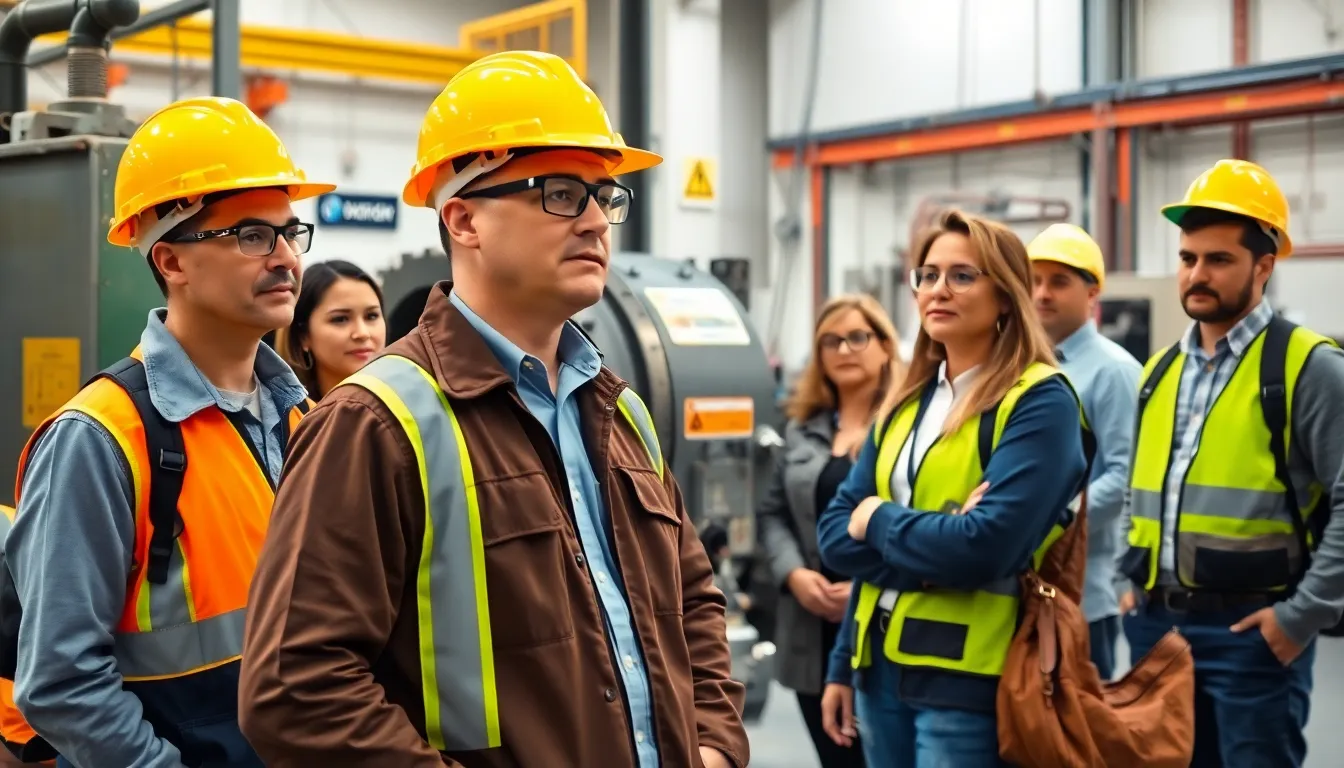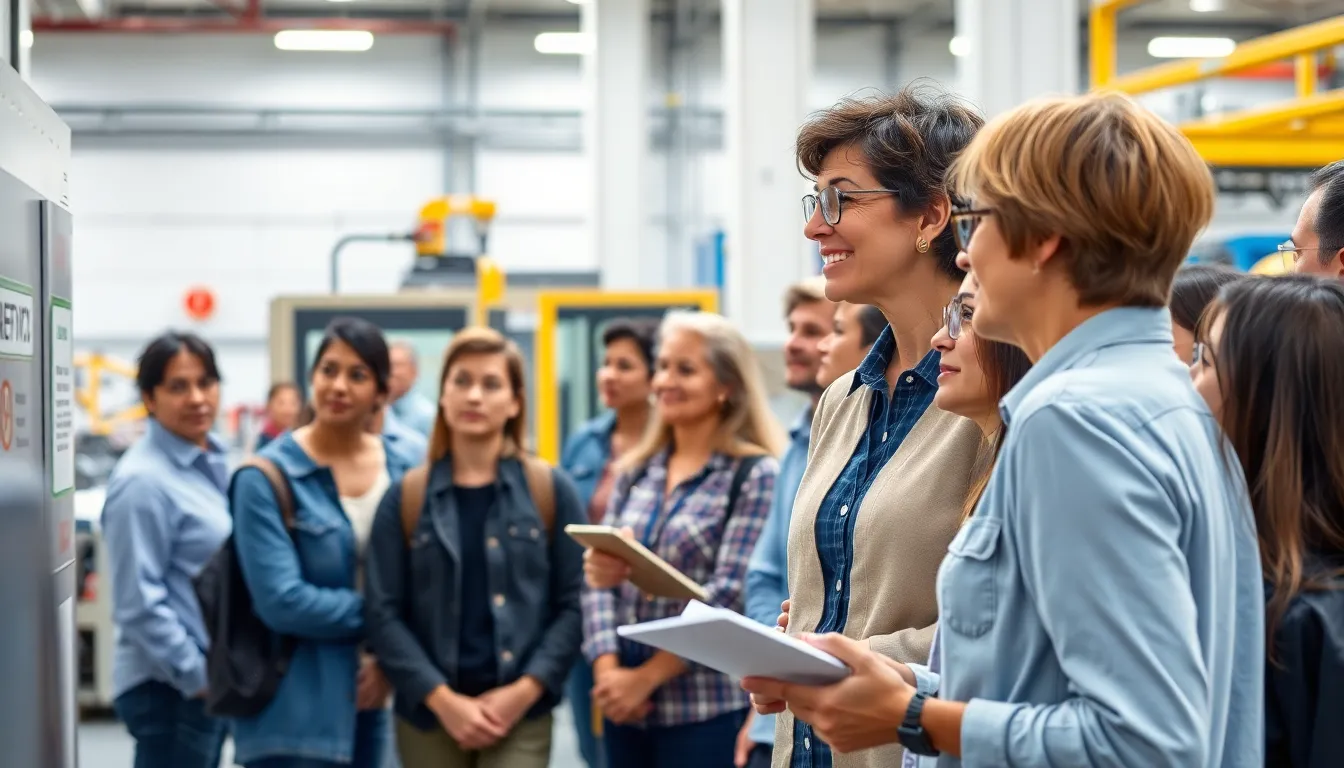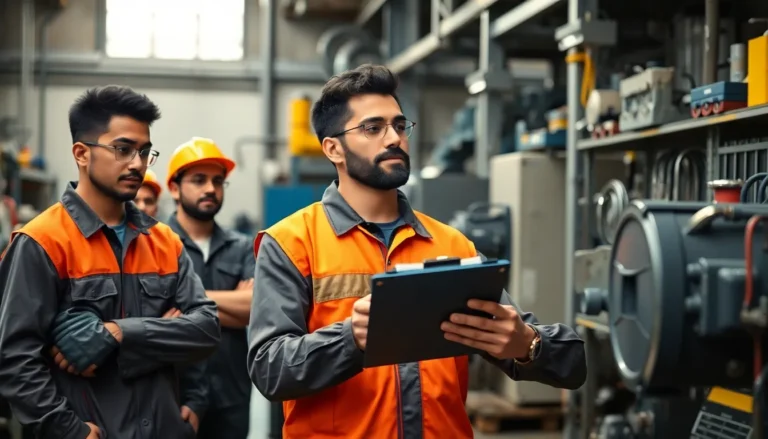Table of Contents
ToggleWhen it comes to facility tours, preparation is key. Imagine walking into a new space and forgetting to check the essentials—like where the coffee machine is or if the restrooms are fit for human use. A well-crafted facility tour checklist can save the day and ensure no detail gets overlooked.
Purpose Of A Facility Tour Checklist
A facility tour checklist serves as a vital tool for anyone conducting a tour. It helps eliminate uncertainties by listing all necessary items to review. Proper organization enhances engagement and promotes a smoother experience for both hosts and visitors.
Visitors benefit from a clear structure, ensuring they receive comprehensive information about the facility. For instance, the checklist includes items like key operational areas, safety equipment, and amenities. This structured approach ensures that critical locations, such as restrooms and break areas, are highlighted.
Using a facility tour checklist can also enhance time management. Tours conducted without a checklist can overlook important details, leading to wasted time. A prepared checklist keeps the tour on track, allowing for efficient coverage of all points of interest.
Additionally, consistency is crucial. Each tour conducted with a checklist maintains a standard level of information shared. This consistency fosters trust, as visitors know what to expect, leading to a more informative experience overall.
Moreover, documenting each tour efficiently informs future tours and improvements. Feedback gathered on areas discussed during the tour can guide adjustments to the checklist. Regular updates to the checklist based on direct input can result in a continually refined tool.
Ultimately, a facility tour checklist streamlines preparation and execution. It serves both present needs and future enhancements, ensuring each tour is productive and thorough.
Key Components Of A Facility Tour Checklist

A thorough facility tour checklist enhances preparation and ensures no critical aspects are missed during tours. The following components are essential.
Safety Considerations
Safety remains a top priority during facility tours. Identify emergency exits and first aid stations, ensuring visitors know their locations. Clearly communicate safety protocols, such as fire evacuation routes and personal protective equipment requirements. Inspect the facility for any hazards that may pose risks, documenting these observations for quick resolution. Regular updates to safety measures keep them relevant and effective.
Equipment Inspection
Conducting equipment inspections forms a vital part of the checklist. Verify that machinery and tools are functioning correctly before tours start. Note any required maintenance or repairs, ensuring these items are prioritized for future action. Check safety guards and operational controls for compliance. Engaging visitors with demonstrations or explanations of equipment enhances their understanding and appreciation of operations.
Cleanliness and Organization
Cleanliness contributes to a positive impression during facility tours. Evaluate cleanliness in high-traffic areas, restrooms, and break rooms, noting any areas that require attention. Ensure that workspaces are organized, with materials and tools stored appropriately. An orderly environment promotes safety and efficiency, making a better experience for visitors. Regular assessments of cleanliness standards help maintain a professional atmosphere throughout the facility.
Steps To Create An Effective Facility Tour Checklist
Creating a facility tour checklist requires careful planning and attention to detail. The following steps guide the process effectively.
Identifying Areas To Inspect
Identifying areas to inspect is critical for a comprehensive facility tour. Focus on key operational zones, including production areas, storage rooms, and common spaces. Highlighting safety equipment and emergency exits prioritizes visitor safety. Include restrooms, break areas, and parking to enhance visitor comfort. Conducting a walkthrough before the actual tour ensures nothing important is missed.
Collaborating With Team Members
Collaborating with team members strengthens the checklist’s effectiveness. Engaging various departments offers unique perspectives on essential areas to cover. Scheduling brainstorming sessions encourages input and fosters ownership among staff. Utilize tools like team meetings or shared documents for collaboration. Seeking feedback on the checklist’s format and content promotes its usability and relevancy.
Customizing The Checklist For Specific Needs
Customizing the checklist for specific needs maximizes its utility. Consider the audience and tailor the focus on their interests or concerns. Adjusting details based on the type of tour—such as employee orientation or client visits—ensures appropriateness. Incorporating questions that foster discussion helps address visitor interests. Maintain flexibility to revise the checklist as requirements evolve, ensuring a valuable experience for all parties involved.
Tips For Conducting A Successful Facility Tour
Conducting a successful facility tour involves several key strategies. Engaging participants actively enhances their experience and retention.
Engaging Participants
Create interactions during the tour to stimulate interest. Ask open-ended questions that encourage participation and feedback. Provide opportunities for visitors to share their thoughts and experiences, which fosters dialogue. Offer insights into operational processes that connect to visitors’ interests. Highlight unique features or innovations within the facility, drawing attention to aspects that may surprise or intrigue participants. Use visual aids or demonstrations to make concepts more relatable. Tailor discussions based on the demographic and interests of the audience, ensuring relevance throughout the tour.
Documenting Findings
Take notes throughout the tour to capture feedback and observations. Document visitor questions and comments that might indicate areas for improvement. Include any suggestions for future tours, focusing on gaps or topics that require more clarification. Use feedback forms to systematically gather insights at the tour’s conclusion. Analyze this data to identify trends and common concerns. Share findings with relevant team members to enhance future tour experiences. Regularly review documentation to refine the checklist and adjust the focus areas as needed. Prioritize identifying effective strategies that elicit positive reactions from visitors.
A facility tour checklist is an essential asset for anyone looking to conduct effective and engaging tours. By ensuring all critical areas are covered and potential pitfalls are avoided, it enhances the overall experience for both hosts and visitors. The structure provided by a checklist not only promotes consistency but also fosters trust and professionalism.
Regularly updating the checklist based on feedback allows for continuous improvement, ensuring that each tour remains relevant and informative. With a well-prepared approach, facility tours can become valuable opportunities for connection and insight, leaving a lasting positive impression on visitors. Embracing this tool can transform the way tours are conducted, making them more organized and impactful.








